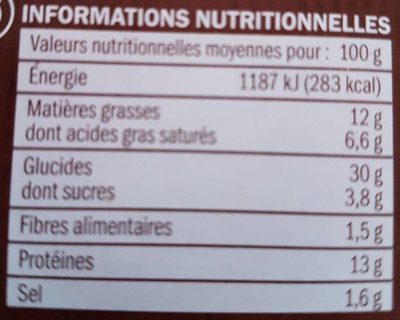Burger Le Montagnard jambon et raclette - Côté Snack - 180 g
This product page is not complete. You can help to complete it by editing it and adding more data from the photos we have, or by taking more photos using the app for Android or iPhone/iPad. Thank you!
×
Some of the data for this product has been provided directly by the manufacturer Scamark.
Barcode: 3564700844588 (EAN / EAN-13)
Quantity: 180 g
Packaging: Plastic, Cardboard, Fresh
Brands: Côté Snack, Marque Repère
Categories: Meats and their products, Meals, Sandwiches, Meals with meat, Pork meals, Refrigerated foods, Hamburgers, Microwave meals, Refrigerated meals, fr:Hamburgers au jambon
Labels, certifications, awards:
Green Dot, Made in France
Origin of ingredients: European Union
Manufacturing or processing places: France
Stores: Leclerc
Countries where sold: France
Matching with your preferences
Environment
Packaging
Transportation
Other information
Preparation: QUELQUES CONSEILS POUR DEGUSTER VOTRE PRODUIT CHAUD 1 Placez le burger encore dans son emballage directement dans votre four à micro-ondes. 2 Réchauffez 1min10 sec puissance 900W. 3 Laissez reposer 1 minute avant dégustation.
Report a problem
Data sources
Product added on by kiliweb
Last edit of product page on by packbot.
Product page also edited by beniben, openfoodfacts-contributors, org-scamark, quechoisir, scamark, yuka.Ulo0N0Y0b2ptTWxVaGM4UHhUN3cxK0pKNDZMeFFrNkZKOUVYSWc9PQ.











